Plastic Decorations ambush markets of organic Sholapith flowers – GetBengal story
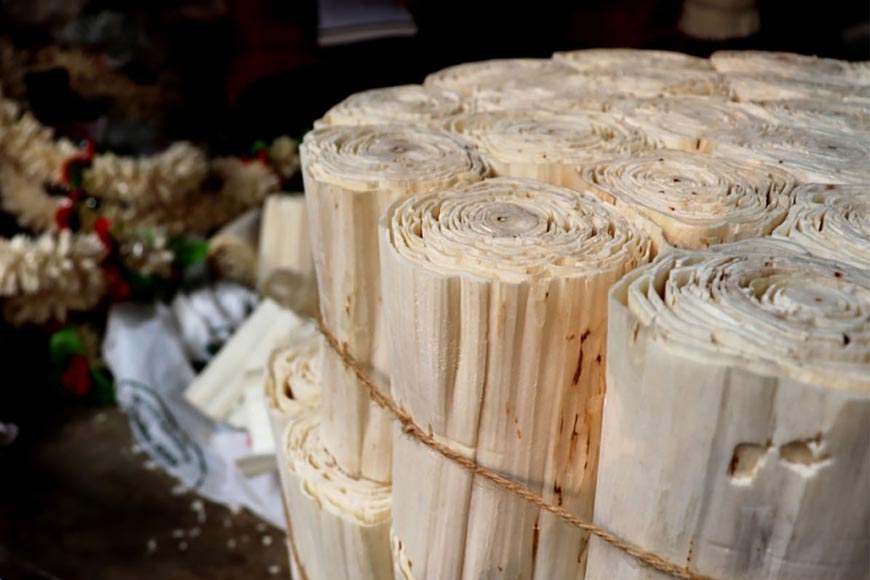
As the countdown to Durga Puja begins, there is a scurry of activities in North Kolkata’s potters’ hub, locally known as Patuapara in Kumartuli. Artisans are busy adding final touches to the idols. Rows of shops line the lanes and by-lanes that branch out from the main thoroughfare. The artisans are busy getting the decorative items and ornaments for the idols ready before the deadline.
The white decorations used on Ma Durga and her celestial children—the crown, the breastplate, the sari—are made of a bright white material called sholapith. It is a milky-white, delicate, spongy plant, also referred to as Indian cork. Shola is an annual aquatic herb that grows in marshy areas.
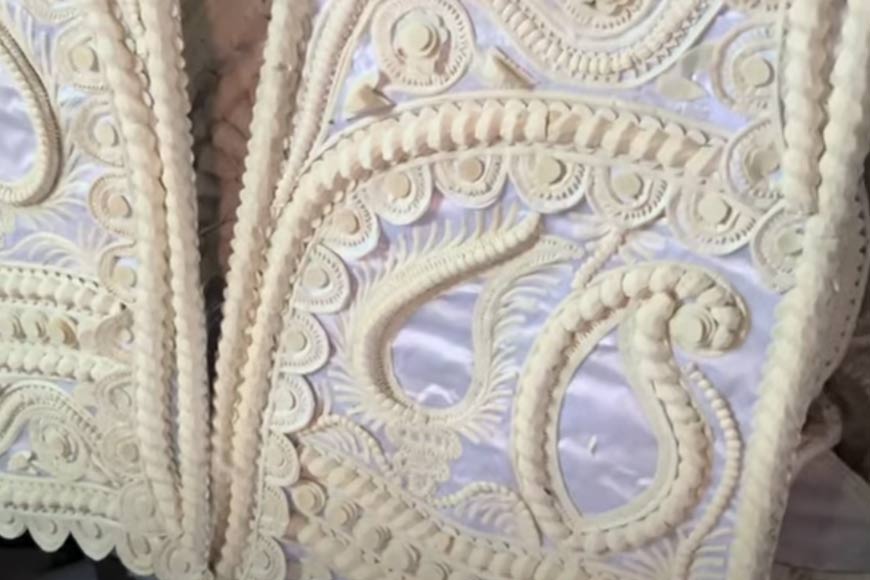
Shola craft is an age-old tradition of Bengal that involves making decorative objects from the soft core of the Shola stem. Shola is used not only as a material to make accessories for deities but also as a part of Hindu rituals in Bengal. The pristine white colour of the shola is suggestive of purity and sacredness. The Chandmala hanging from the hand of an idol is traditionally made of shola. The mukut and topor, the headgear of the Bengali bride and groom, are made of shola. The Manasa chali, the backdrop of the snake goddess’s idol, has a touch of shola at the top. String puppets are made from a shola base and a clay exterior.
The craft is rooted in the culture, rituals, and religious requirements of everyday life. Shaping its stem into finely detailed designs requires great skill. It can be shaped exquisitely, allowing for a whole range of designs. Shola craft is a cherished tradition that has adorned homes for centuries. From delicate floral arrangements to intricate wall decor, each piece tells a story of heritage and craftsmanship. The people engaged in sholapith crafting are known as Malakar, meaning 'maker of garlands', probably because these artisans made shola garlands for idols and for the noble class.
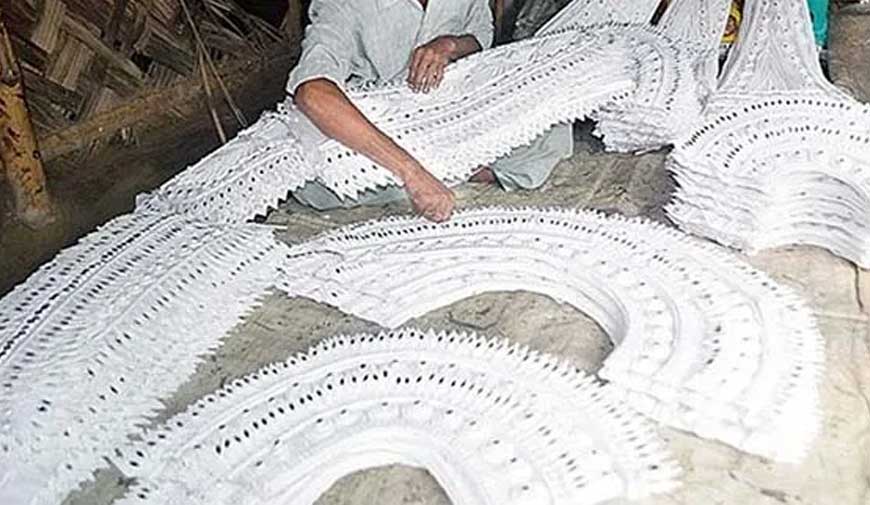
Deft shola craftsmen replicate exquisite kadam flowers from Burflower trees (Neolamarckia cadamba, with English common names laran and Leichhardt pine), and these are regarded as essential items in pujas and religious festivals in Bengal. However, artisans fear that very soon the shola kadam flowers they make so painstakingly will become extinct. It is a traditional rural cottage industry, and around 5,000 artisans are involved in this craft in Bengal. These craftsmen spend several months on a piece to meticulously carve out the details. In Murshidabad, the shola crafts include flowery designs, decorative headwear of gods and goddesses, garlands, peacock boats, palanquins, etc. In South 24 Parganas, many poor families earn their livelihood from making flowers, birds, etc. from shola. Shola products are exported to different countries in the world, including the US, UK, Australia, Canada, Japan, Thailand, Korea, and China, but the artisans rarely benefit from the export of their work since the middlemen and the export companies by and large appropriate most of the profits from the export. To add to their woes, the aggressive invasion by plastic flowers to displace shola has hit them hard, and the craftspeople are disturbed about their bleak future.
As the countdown to Durga Puja begins, there is a scurry of activities in North Kolkata’s potters’ hub, locally known as Patuapara in Kumartuli. Artisans are busy adding final touches to the idols. Rows of shops line the lanes and by-lanes that branch out from the main thoroughfare. The artisans are busy getting the decorative items and ornaments for the idols ready before the deadline.
According to a survey of sholapith work in West Bengal, this craft is mainly practised in the districts of Burdwan, Murshidabad, Birbhum, Nadia, Hooghly, Malda, South 24 Parganas district, and some other parts of the state. The implements used by the craftsmen are very simple, consisting of knives, needles, scissors, strings, and measuring tapes.
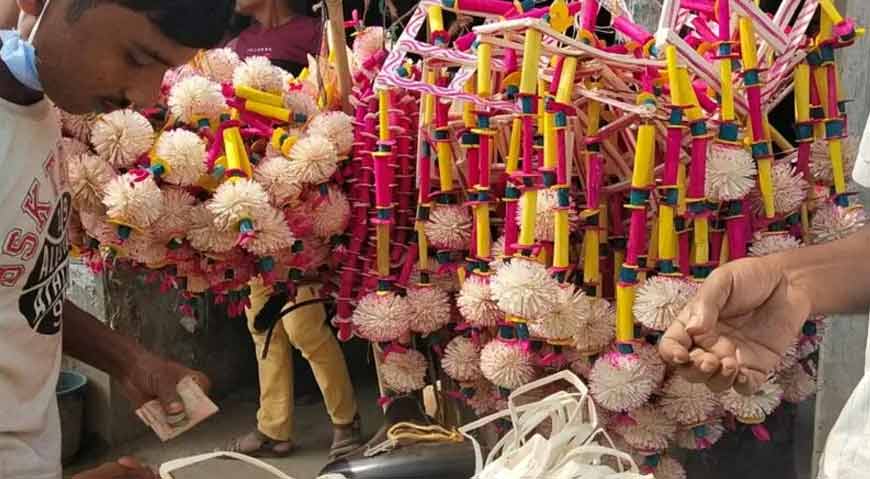
A survey of sholapith workers conducted under the initiative of the Ministry of Micro, Small & Medium Enterprises (MSMEs), Government of India, Bengal Women Welfare Association, and National Institute of Design has shown that some of the shola craftspeople earn as little as Rs. 30 per day. As prices of essential commodities continue to escalate, sholapith workers face the threat of extreme poverty. Moreover, the younger generation among these workers migrates to the towns or takes up some other employment, abandoning their traditional vocation, which seems to be fetching them very little economic benefit. As a result, a majority of the craftspeople now consist of women and old men.
In recent years, plastic flowers have invaded the shola flower market, and this has put immense pressure on traditional craftspeople. Bengal’s largest annual festival, Durga Puja, has almost arrived, yet shola artisans are in anguish, spending their days in uncertainty. This year, the harvest of shola was far below projections and did not meet the annual demand, all thanks to the vagaries of nature. Hence, there is an acute shortage of shola in the market. This situation is aggravated by the non-payment of artists’ allowance.
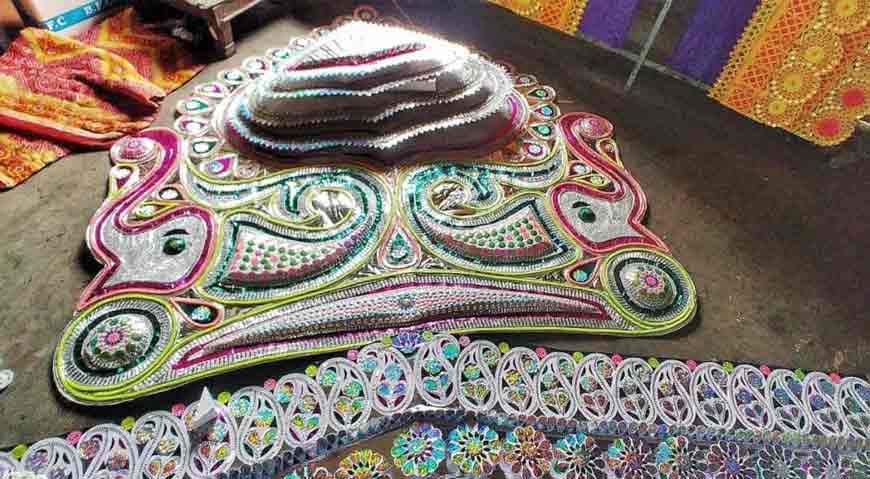
In the past, shola was cultivated in different parts of the state, but the cultivation has nearly come to a halt. The shola plant generally grows in marshy areas, and hence the destruction of wetlands and deforestation is adversely affecting its growth by destroying its natural habitat. As a result, the cost of importing shola from other states like Assam and Bihar has increased substantially, forcing artisans to procure the raw material at a higher cost.The conservation of wetlands, therefore, is of primary importance if the shola craft industry is to survive.
The price at which shola was sold five years ago remains static and is still being sold at the same price. But with the shifting tides and times, shola handicrafts used during propitious ceremonies have been losing their monopoly in the market gradually. As a result, shola artisans are going through an acute crisis. For decades, the demand for flowers and handicraft items made of shola soared during annual festivals like Durga Puja, Kali Puja, Lakshmi, and Saraswati Puja and a host of other lesser-known regional pujas, and the artisans made a decent living selling their wares.
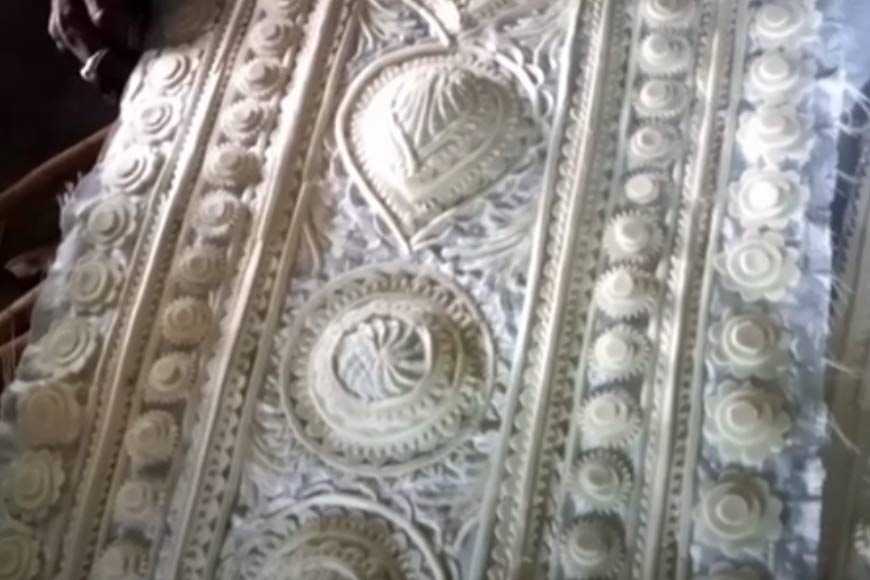
The supply of shola crafts has in part decreased because the artisans are not getting good-quality raw material to create decorative pieces. To add to their woes, the demand for cheaper alternatives like low-grade plastic flowers has put a nail in the coffin. The beautiful handmade crafts of shola represent Bengal’s culture, and steps need to be taken to preserve this endangered heritage.










